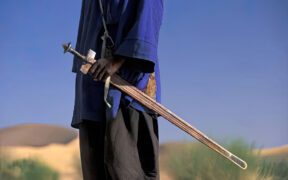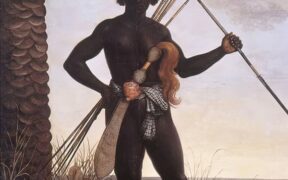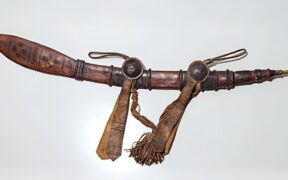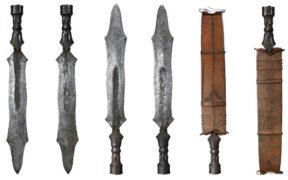Kuba Ikul: The Leaf-Shaped Peace Sword of Central Africa
NO AI USED This Article has been written and edited by our team with no help of the AI
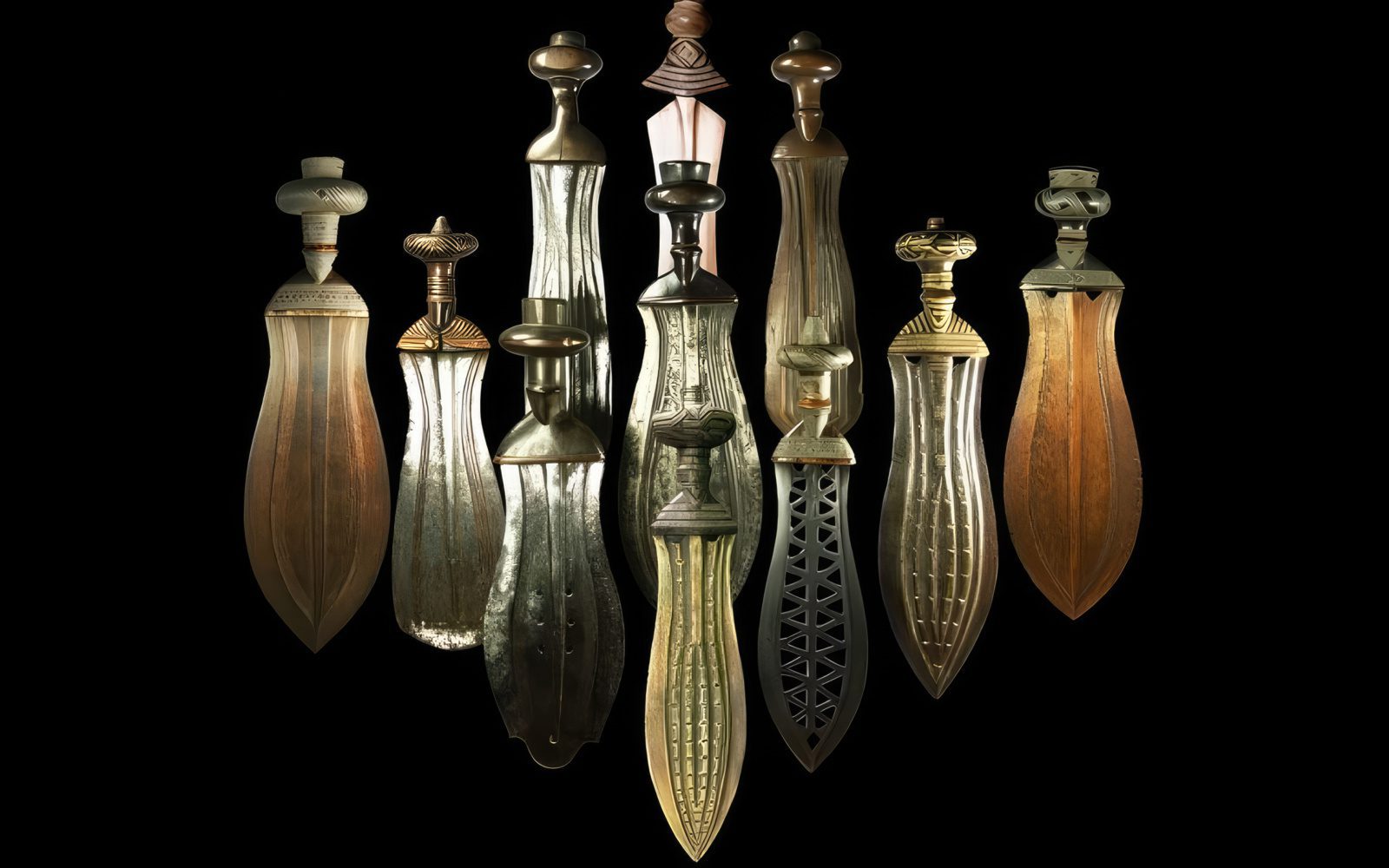
Many African swords are known for their fearsome and terrifying appearance, which may or may not have been used for warfare and combat.
However, some blades are made solely to deter and end wars. One such dagger or shortsword is the Ikul, also known as the Kuba Ikul sword, used by the Kuba tribes in Central Africa.
The Kuba Ikul or “Peace Knife” was primarily produced and designed for aesthetic purposes. In this article, we will cover its beautiful characteristics and explain how this blade was used. Then, we will delve a bit into its history and origins and discuss if it is still used today.
Characteristics of the Ikul Sword
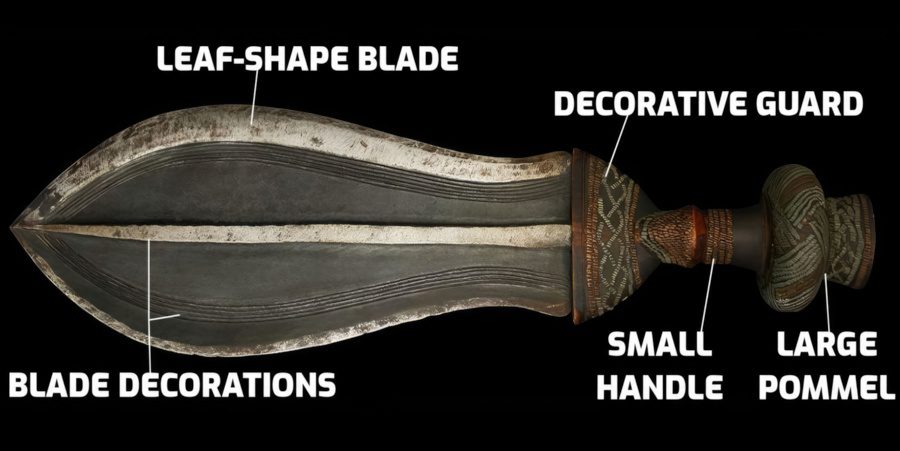
Ikul African Swords are some of the easiest blades to distinguish from all other African blades. They can take on many different shapes and forms, but primarily have a leaf-shaped design that broadens at the last half of the blade, tapering to a tip. All of the Ikul shortswords are small, with a length similar to that of a dagger or knife.
Blade
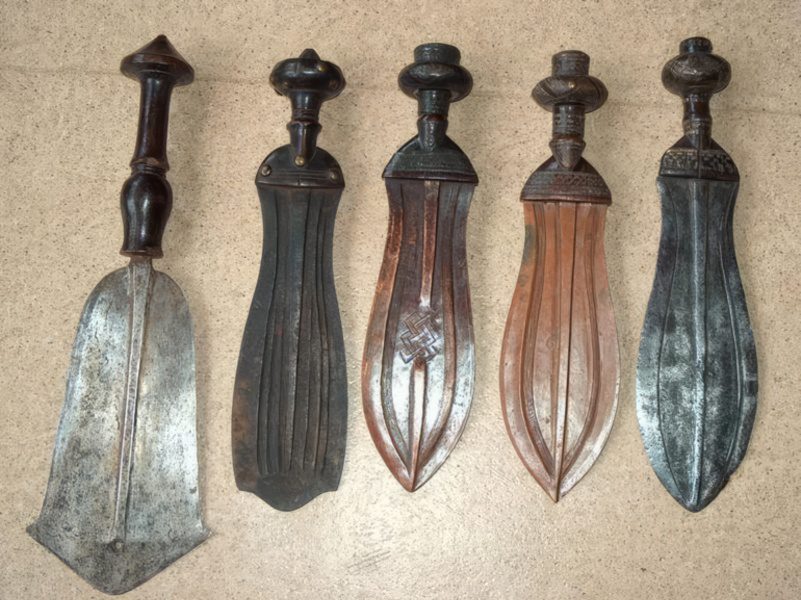
The Ikul dagger features a leaf-shaped blade that curves outward from the midpoint, made from materials like wood, copper, bronze, iron, or steel (for royalty).
Typically 10 inches (25 cm) long, there are over 20 Ikul blade variations, often reflecting the owner’s social rank.
Commonly, Ikul blades have a mid-rib for aesthetic purposes and are not sharpened, as they’re not meant for combat but likely for ceremonial or symbolic use.
Guard
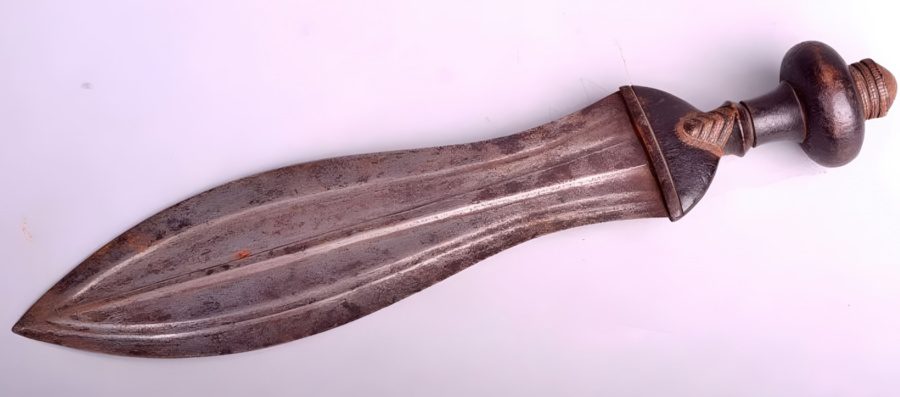
African Ikul swords are not equipped with any type of guard. The primary reason for this is that they are symbolic and complement traditional attire, rather than a weapon for combat.
Some may view the widening upper handle as a form of guard, but this feature is purely decorative.
Handle
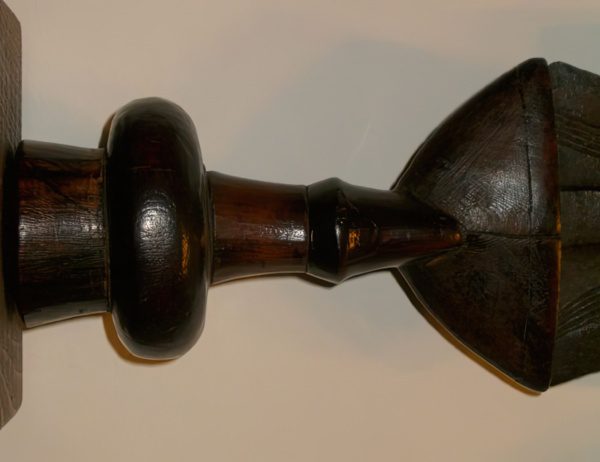
The handle of the Ikul is straight and highly decorated. It is not designed for flexibility or ease of use, but rather for decoration and aesthetic appeal. Just like the blade, it can come in different shapes and variations.
However, the most common structure has one or a couple of ribs on it. The upper part widens into the guard or blade, and the lower part is a large pommel.
Although generally made of wood, there are also handles made of silver or bronze.
Pommel
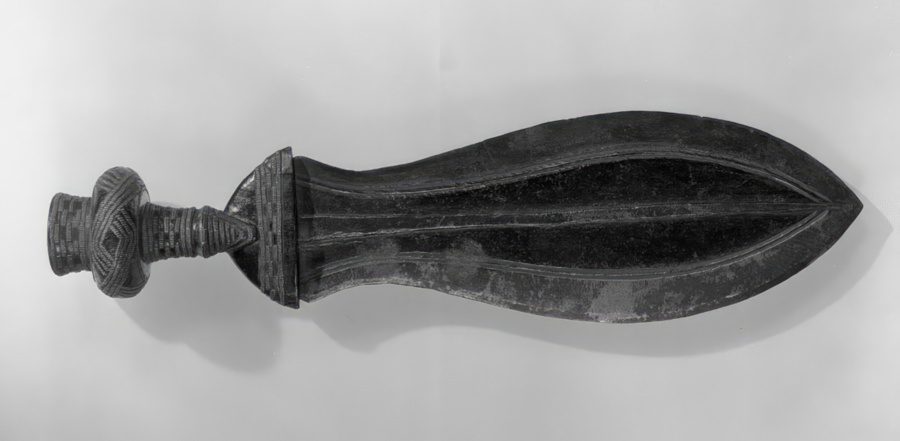
Ikul blades may feature a large pommel that protrudes from the lower part of the handle, which some may consider a pommel in itself. This round pommel serves not only an aesthetic purpose with its various engravings and metal inlays, but also functions as a weight balancer for the broad and wide blade.
Although typically made out of wood, metal is sometimes used as well. The most common design on the pommel is the raffia textile, which is a traditional pattern used on the clothes of the Kuba people.
Scabbard
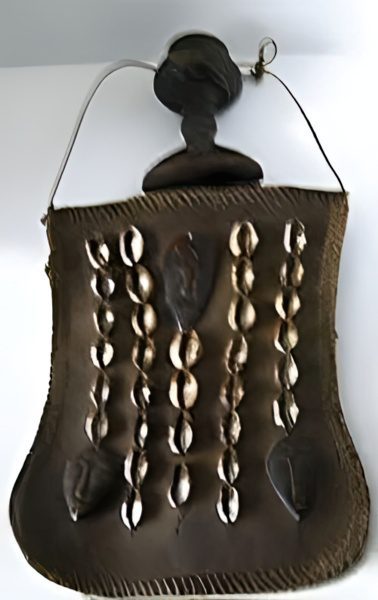
The Ikul sword or knife does not really feature a scabbard. Instead, it is more of a decorative piece that displays the blade as an insignia of the wielder’s status and rank.
In some rare cases, such as when the sword is being gifted or used in various ceremonies, there may be some unique-looking scabbards that resemble bags and feature the many traditional symbols and masks from the Kuba tribes.
Length & Size
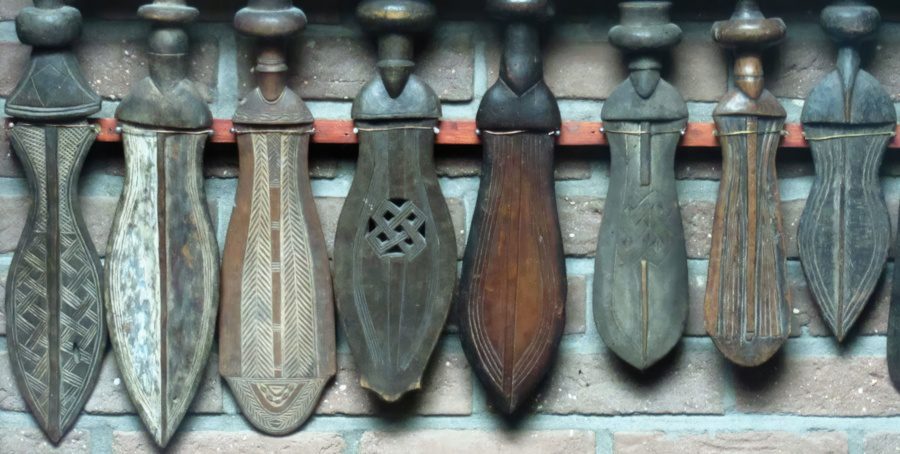
Ikul shortswords are not meant to be used for battle or combat. Instead, they are intended to be carried daily and serve as a part of the traditional attire of the African Kuba people.
This is why they are very small, typically only the length of a knife, with a range of around 14 inches (35 cm), although some can measure up to 20 inches (50 cm).
Weight
As a very short sword, the Ikul is inherently a light tool. However, its weight can vary significantly depending on the metal or wood used in its construction.
Despite this variability, the Ikul typically weighs around 0.66 lbs (300 grams), making it an exceptionally lightweight tool.
Uses of the Ikul Sword
The African Kuba Ikul sword, dagger, or knife is not intended for combat and therefore is made to be small and unsharpened. Traditionally carried without a scabbard, this one-handed shortsword hangs behind or on the side of the user.
Prestige & Status
Historically, all adult men of the Kuba tribe wore a dagger known as the Ikul, which was an item of status. It was a highly decorative and exquisite piece of metallurgy or woodcraft that could signify a person’s rank.
With over 20 varieties of the Kuba Ikul, each is designed to represent a specific hierarchy. In war, the locals wielded other blades. However, during times of peace, the Ikul would be carried around the waist of men, representing warriorhood, loyalty, kingship, and masculinity.
Ceremonial
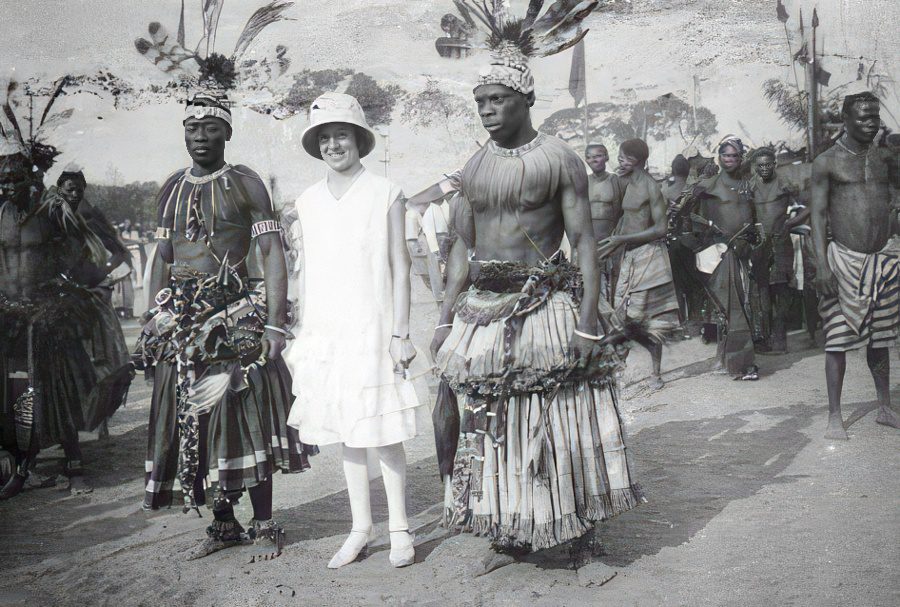
One of the main and most attractive pieces of ceremonial wear for the Kuba people is the Ikul shortsword.
Part of their traditional attire, the Ikul is observed in weddings, traditional dances, events celebrating or commemorating certain past events, gifts, diplomatic missions, trade offerings, currency, and so on.
The most exquisite and masterfully crafted Ikul, which were made by the renowned and revered Kuba blacksmiths, were only seen at royal events.
Peace Offering & Slavery
The Ikul Sword, also known as the “Peace Knife,” dates back 4 centuries. Traditionally, the Ikul was a blade gifted as a peace offering after wars. Although giving a sword as a peace offering may seem confusing, the Kabu and Central African tribes see it as a sign of stability.
Although this could be disputed, the Ikul blade could act as a sign of freedom and belonging to a certain tribe.
Slavery was prevalent in the Kabu tribe, as it was in many surrounding African regions. The Kabu were particularly active and ferocious, enslaving many neighboring tribes. That is why having an Ikul around one’s waist could mark them as a person not to be enslaved.
History & Origins of the Ikul Sword
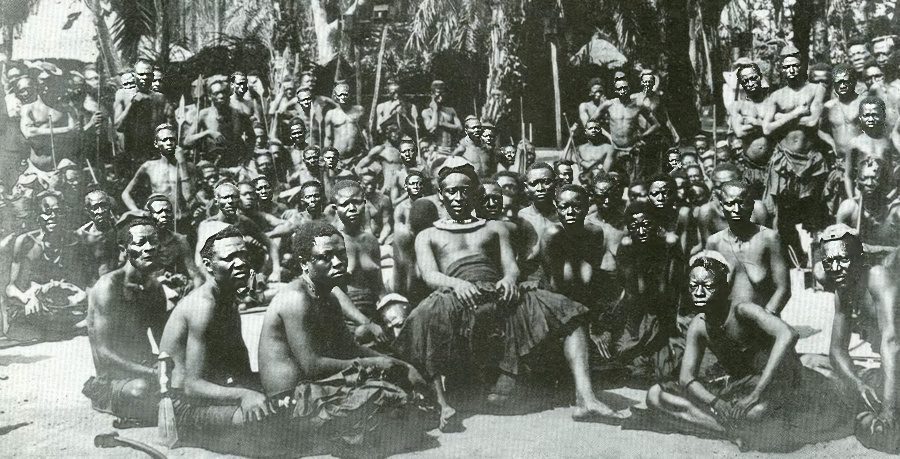
The Ikul is a shortsword or dagger that is still in use by the Kabu people of the modern Kassai regions of Central Africa, particularly in the areas of the Democratic Republic of Congo, formerly known as Zaire. Despite being called a sword or a knife, the Ikul was not a tool of war or combat. Instead, it is an item of peace.
It is called a Kuba Ikul sword because it was the most frequent and common in the Kuba Kingdom (1625-1900). Believed to have origins that date back to the early 16th century, the Ikul swords were directly inspired by swords made in Benin, especially the ceremonial Benin Swords which also had leaf-shaped blades.
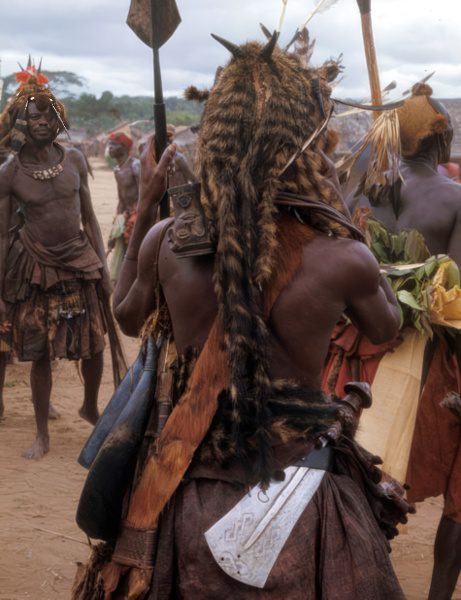
Shamba-Bolongongo, chief of the Kuba during that time, may have introduced the Benin blade after visiting Benin during the war. After several wars, Shyaam a-Mbul Ngoong-Shyaam united all the independent Kuba tribes and established peace after banning the popular deadly throwing sickles known as Shongo.
The Bushoong clan, primarily the royalty class, wore Ikul blades as a symbol of authority and peace, a tradition that continues to this day. Today, Ikul blades are still used by the Kuba people in various ceremonies and are a crucial part of their culture in representing peace.
